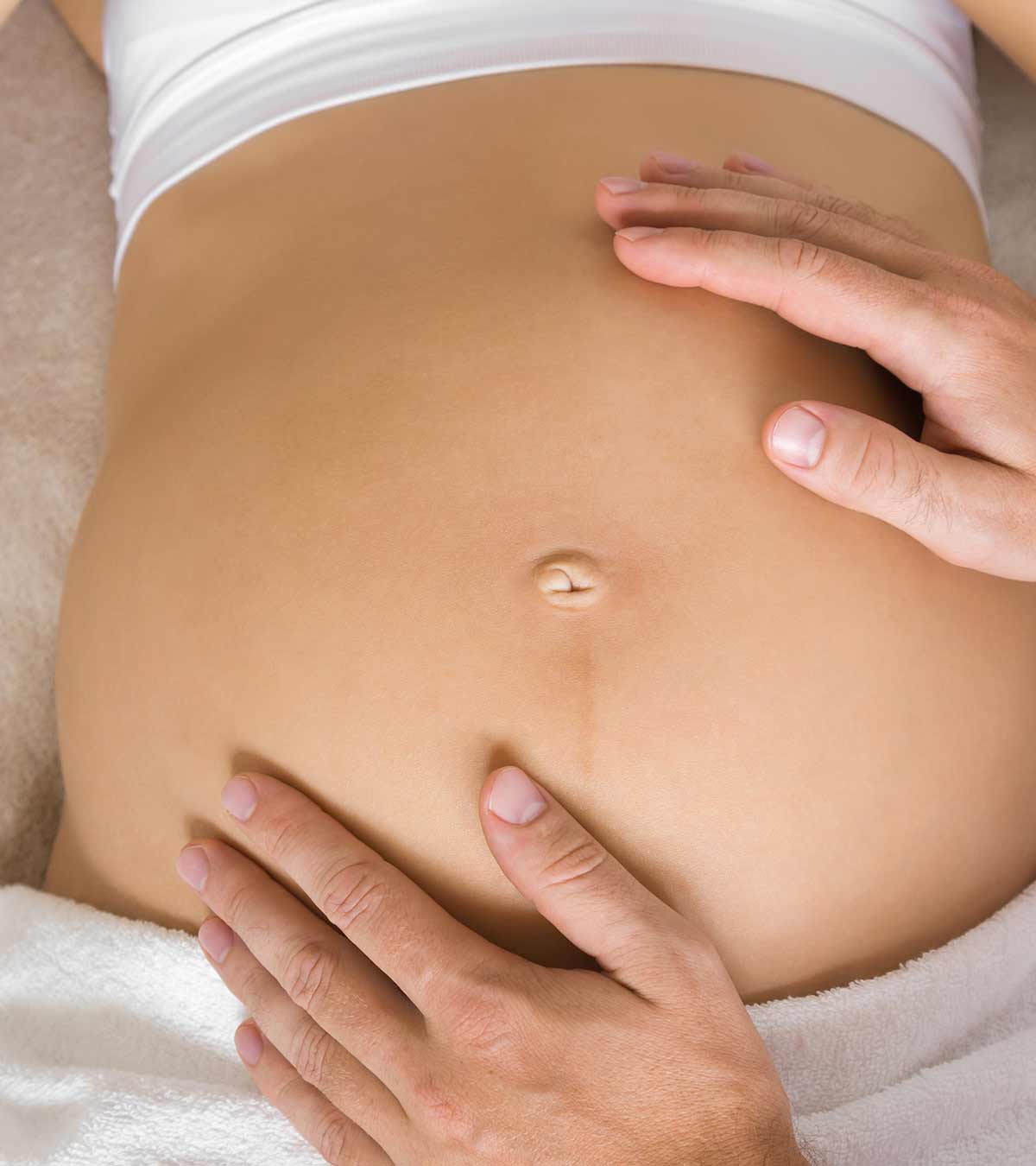
Image: Shutterstock
Babies twist and turn inside the mother’s womb. And as one gets closer to labor, almost all babies will move into the delivery position which is head-first. However, in some cases, it will be the baby’s buttocks or feet that will be closer to the birth canal. This is known as breech presentation. Around 3-4% of full-term births can end up being breech presentation (1).
Breech Births Can Be Of 3 Types
Image: Shutterstock
There are 3 types of breech birth presentations (2):
1) Complete Breech
In this position, the baby’s butt will be downwards with their legs bend along the knees, whereas the baby’s feet will be closer to the buttocks.
2) Frank Breech
Here, the baby’s butt will be towards the birth canal and the legs will be straight up with the feet adjacent to the head of the baby.
3) Footling Breech
In this type of breech presentation, the baby’s feet will be pointed downwards to be delivered first.
Factors That Contribute To Breech Presentation
Image: Shutterstock
Though it’s not completely understood why a baby ends up in a breech position, certain factors may contribute to breech presentation (3):
- When this is not your first pregnancy.
- When the amniotic fluid in the uterus is either excessive or not enough.
- When you are having a multiple pregnancy (twins, triplets, or more).
- When the shape of the uterus is not normal or there is the presence of abnormal growth like fibroids.
- When the placenta covers the opening of the uterus partially or fully.
- When you are having a premature delivery.
The doctor can check and confirm if the baby is in a breech position by keeping their hand in the mother’s belly to find the position of the baby’s back, buttocks, and head in the uterus. If the doctor suspects that the baby is not in the correct position, an ultrasound can be done to confirm if the baby is breech.
What Can Be Done If Your Baby Is In A Breech Position
Image: Shutterstock
Your doctor will perform different methods to turn your baby from the breech position. However, the success rates of each of these methods may vary (4).
External Version
It is a medical technique that is used to change the position of the baby in the womb. During this procedure, the doctor might prescribe a medication that helps in the relaxation of the uterus. An ultrasound will also be performed to locate the baby’s position as well as the placenta. Ultrasound is also helpful to determine how much amniotic fluid is there in the uterus.
In the external version, the doctor will gently push the lower part of the abdomen so that the baby can be turned head-down for delivery. Throughout the procedure, the doctor will closely monitor the heartbeat of the baby to make sure that the baby’s life is not in danger. This way, if a problem occurs, they can immediately discontinue the procedure.
Image: Shutterstock
Webster Technique
Thanks to Larry Webster of the International Chiropractic Pediatric Association, a chiropractic technique called Webster Breech Technique was developed. This technique helps the uterus to relax by reducing stress on the pelvic region. Once the uterus is relaxed, it will be easy for the baby to change its position naturally to a head-down position. According to the Journal of Manipulative and Physiological Therapeutics, the Webster technique has a success rate of 82%.
The Breech Tilt
Breech tilt is a free risk technique performed with the help of firm large pillows. The pillows are used to elevate the hips around 30 cm off the ground for a quarter of an hour. This needs to be performed three times a day preferably when the baby is most active.
If your baby continues to be in the breech position even after performing these methods, your doctor will take a final call and might consider a C-section to reduce the risk of complications.

















